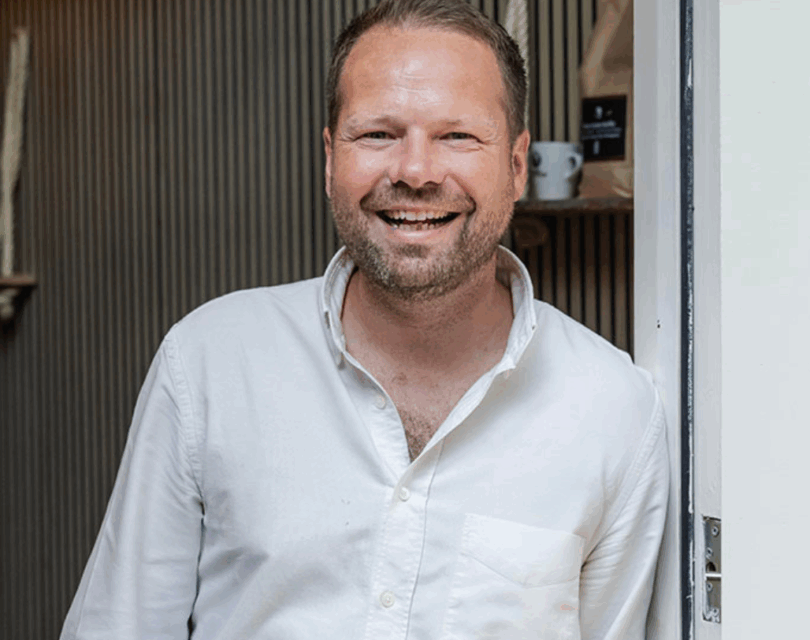Structure alone won’t spark lasting organisational change. In this article, you’ll read how to turn organisation design into an evolving organisational development practice by focusing on:
- Structure as a tool, not the solution.
- Real collaboration that flourishes in the overlaps, not in separation.
- A unified leadership team that acts as one system, not isolated experts.
- A mindset that continuously adapts. Because organisation design is never finished.
Let’s go from strategy to impact! 🚀
Written by: Tim Meurs – Managing Partner LQ
Why do so many organisational development efforts stall, even when the strategy is sharp, the structure has been updated and teams have shiny new names?
It’s tempting to believe that if we design it, coordinate it, manage it success will follow. But real impact rarely comes from structure alone. Without clarity, connection and energy, even the most elegant org chart will fall flat.

Don’t organise for control. Organise for ambition. Not for ideal scenarios or perfect roles, but for the people you have today and where they can take your organisation next.
Our longing for clarity and control often makes us focus on the structure itself. But what really matters is how people live and experience that structure: the meaning they give it, the timing of decisions, the context they operate in. And, most of all, the people involved today.
That’s why this is not a blueprint. Instead, I’m sharing 6 principles that have helped me approach organisational development as a craft. Not as a fixed solution, but as a way of thinking and working that evolves with your context.
Because organisation design isn’t about neat diagrams. It’s about enabling real collaboration, momentum and impact.
6 principles for treating organisational development as a craft
1. Don’t structure without direction
Structure is never the solution. It’s a tool. And a tool only works if you’re clear on what it’s meant to achieve.
What do you want to make easier? Faster? Stronger? What do you need to unlock in terms of collaboration or market position?
And just as importantly: do you really need each other to do it? If your teams or departments could operate just as well independently, forcing collaboration through structure won’t help.
"Rule of thumb: if your customer or market doesn’t demand collaboration, it will be difficult to manufacture it through org charts."
2. Design for interdependence, not separation
Many organisational models are based on separation. Neatly defined roles, supposedly “mutually exclusive and collectively exhaustive”.
But reality is messier, and that’s a good thing. Because it’s often in the overlap where real collaboration begins.
So don’t design to shield teams from each other. Design to connect them. Let roles intersect, reinforce and complement one another.
3. Build leadership teams that actually lead together
A structure only works if leadership does too. And yet leadership teams are often the weakest link: responsible on paper, but disconnected in practice.
Don’t just put your best functional experts in those seats. Place leaders who can build bridges – between people, departments, perspectives. Make sure they have a shared mission and mutual dependency. It’s not about working in parallel, but about building a system of collaboration.

4. Choose guided autonomy
The call for autonomy is valid. But autonomy without direction is chaos. And direction without space is suffocating.
Guided autonomy provides both: clear boundaries and freedom to act within them.
Who decides what? What is the shared rhythm? When do teams loop each other in?
Make those agreements explicit. One powerful approach: let your middle managers co-create the rules they’ll be held accountable to. When people help shape the guardrails, they’re far more likely to honour them.
5. Design teams as engines, not boxes
A team isn’t a box on a slide. It’s a working system: people with a shared mission, rhythm and connection.
A team only functions when it’s right in purpose, composition and relational dynamic. Otherwise, it remains a group, not a unit.
Use the team not as a structural container, but as an engine. Make sure the design works, not just on paper, but in how people work and grow together.

6. Accept that organising is never finished
Almost every design I’ve come across is presented as a final destination. But in reality, they’re all temporary stages. That’s harder to sell and it brings uncertainty. But it’s the truth.
Because the world changes. People move on. Strategies shift.
So don’t get stuck chasing a perfect end state. Instead, work with reflection points. How will you know if your current setup still works? What signs tell you something needs to change? And how do you keep the dialogue open about what’s helping (and what’s holding you back)?
Organising is never finished. It’s about staying aware, adjusting together and adapting as you go.
Almost every design I’ve come across is presented as a final destination. But in reality, they’re all temporary stages. That’s harder to sell and it brings uncertainty. But it’s the truth.
From models to meaning
Organisational development isn’t copy-paste work.
It’s craftsmanship.
You work with what’s there: the people, the mission, the history, the momentum.
And when you manage to give meaning, create connection and make space for real collaboration – even the most unconventional model can lead to brilliance.
Curious to explore how this could apply to your organisation? I’d love to talk.
About the writer: Tim Meurs
With over 15 years of consulting experience, Tim specialises in helping organisations turn vision into action. His passion? Guiding leaders and teams through change by aligning ambition with real impact, always with an eye on a more sustainable future.

